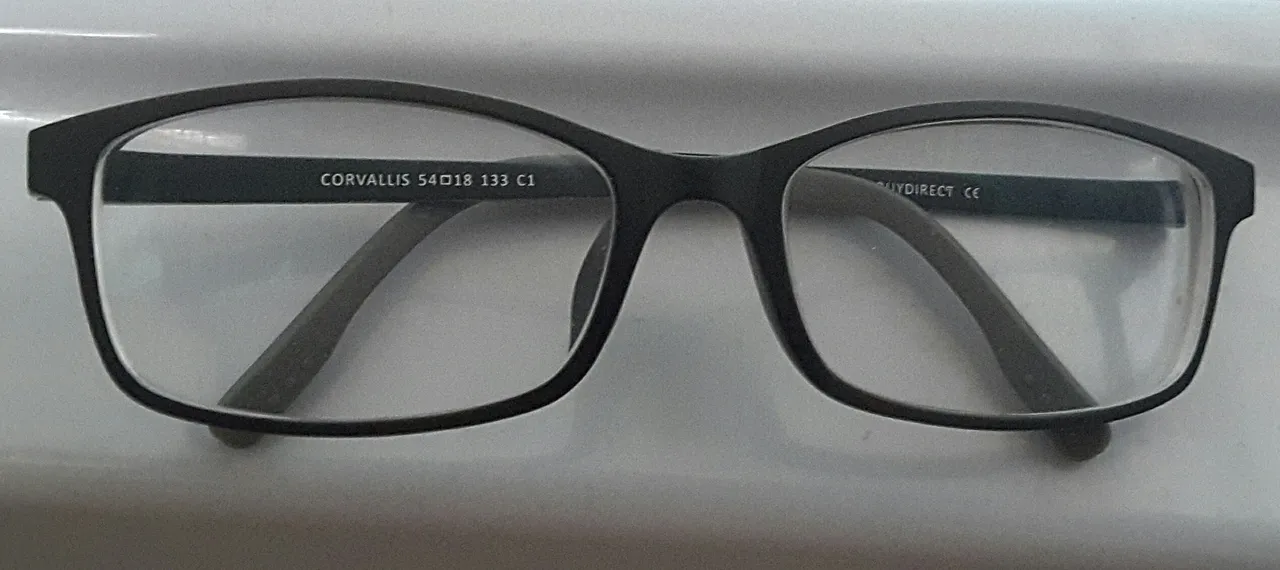I've been researching myopia some more while I wait for my new glasses to be delivered. There was a delay, because they decided to question why I was ordering three pairs at different prescriptions. The quickest way to clear this up would have apparently been to provide a prescription, which I didn't have. The event raised an issue to be aware of and that is that some places get you to agree to terms and conditions which say that if you don't have a valid subscription they can cancel your order and not refund you. Thankfully I hadn't agreed to anything like this so I explained that they were for distance and close up work and my optician keeps my prescription, but if it was an issue they could refund me. They decided to process my order, so it's finally on its way.

As frustrating as this is when it comes to self treatment of your myopia, there are risks to your sight if you don't know what you're doing, so admittedly the safest way to reduce your myopia would be in conjunction with a supportive optician. Unfortunately, a cooperative optician might not be easy to find and if you did find one you'd likely be paying higher costs to work with them. All the more reason for me to be getting thorough with my research.
I was lucky to come across a link to a pdf by someone who was correcting his myopia. In this I read a detailed explanation as to exactly what is happening in your eyes as myopia worsens. The start of myopia is pseudomyopia and it is easily corrected. Normal eyes are most comfortable and relaxed looking at objects 6 metres (20ft) away. When you look at things further afield or closer, the muscle in the eye adjusts the lens to accommodate for the different refractions in light. For closer things it pulls the lens fatter and if you look at something close up for a long period of time the muscle can lock up and the lens gets stuck in that position. It's also known as eye strain. When this happens, your distance vision becomes blurry. Returning to more distance use will release that muscle, but you also need to avoid doing close up work for long periods.
Axial myopia is not so easy to correct and for most people, it happens when they start to use corrective lenses. Your distance vision is blurry, so you put on the corrective lenses to see the board in class, then you look down at your page to write. The muscle is still locked in the fat lens position and now it needs to pull that lens even tighter to fatten it some more, every time you look down with your glasses on. As you continue to do that close up work the muscle locks into that new position and your corrective lenses need to have an increase. The more the muscle pulls on that lens the longer your eye starts to become. When myopia gets over -6.00 the risk of retinal detachment becomes a reality. Lasik surgery doesn't address the muscle problem, it only adjusts the lens and if close up habits are not broken myopia is likely to return along with the risk of retinal detachment.
Well that was enough information for me to discount laser surgery. Once again, it's something to treat a symptom and doesn't address the underlying issue.
While I wait for my new glasses to arrive I'm using my tablet with uncorrected eyes and getting as far away from my computer as I comfortably can. I try to keep my tablet just at the edge of blur to get my eyes working a bit, but not straining too much. I'm very much aware I need to drastically reduce my time on my tablet and computer, so that's what I have been trying to do this past week.
I also have astigmatism and I've been researching more on how to approach reducing this. Thankfully it's not a high prescription, so it shouldn't be too problematic. The recommendation seems to be either increase the sph prescription by -0.50 for every -0.25 of cyl or keep the sph the same and slowly reduce the cyl. Unfortunately, I was struggling to find out anything about reducing the axis numbers on the astigma part of my prescription until I found the previously mentioned pdf. In that, there are much more specific recommendations. If taking the route of increasing the sph to cancel out the astigma corrections, then get rid of both the cyl and axis numbers. If reducing the cyl gradually, then keep the axis correction in place until the final adjustment.
Upping my prescription feels a little to much like undoing the work I’ve already done, so I can't bring myself to correct my astigmatism that way. I will wait until my spherical corrections are below -3.00 and then work on lowering it. It's not recommended to try and adjust it when you are higher than -3.00. No particular reason is given for this, other than that it doesn't seem to work. Because my astigmatism is low, I'm hopefully I can correct it either by getting rid of the correction at once or in two steps. Some people have just dropped it, but some need slower adjustment.
...and now I'm going to put my tablet down for a bit and start using my distance vision.